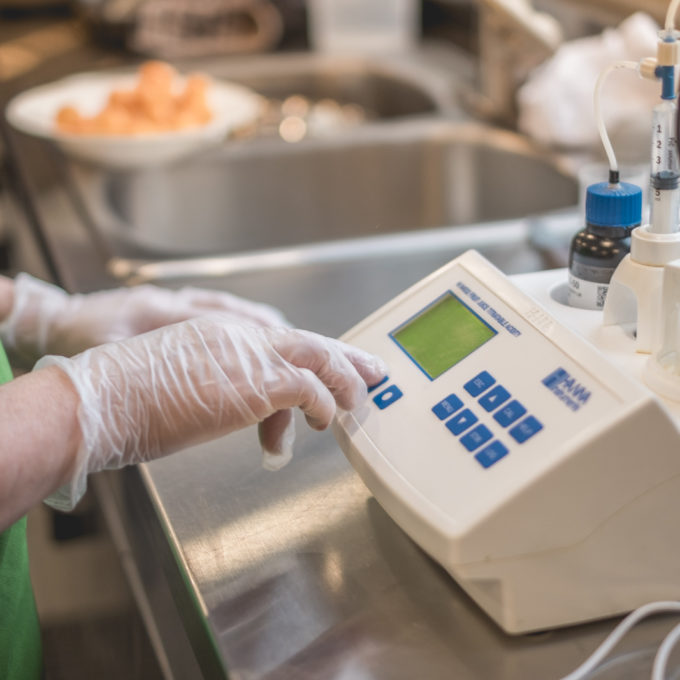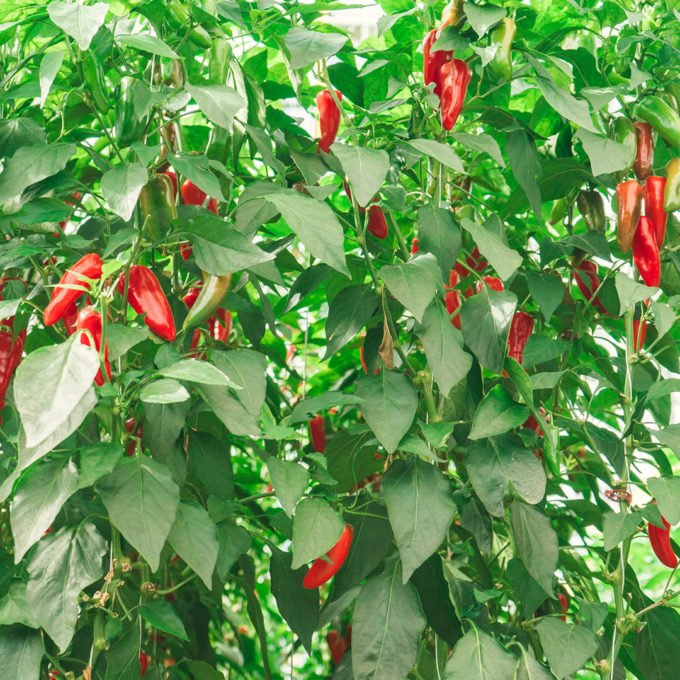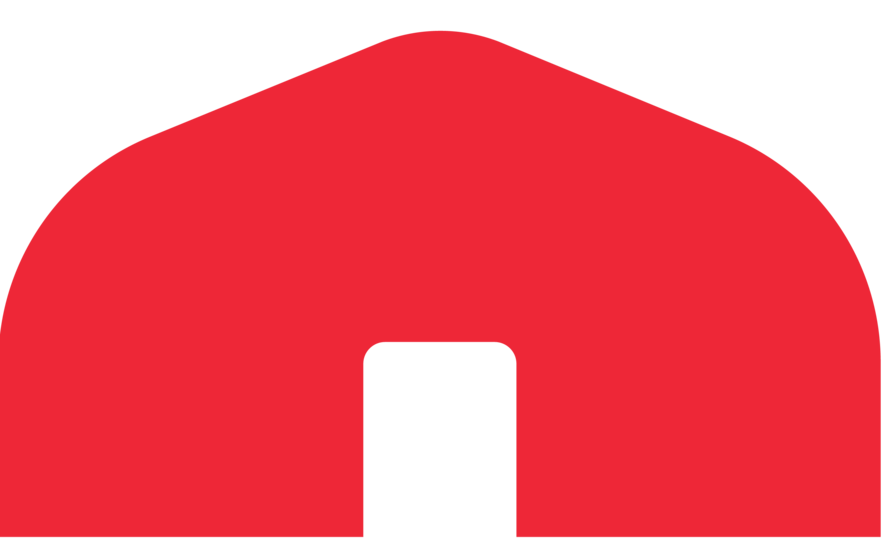The Future of Food is Driven by Science
Feeding our growing communities on a mass scale requires many moving parts that impact one another. Think about it, to get a Red Bell Pepper from our greenhouse to your kitchen, it must be picked, packed, and shipped to your local store and arrive as fresh as the day it was harvested. This would not be possible without food science.
What is food science? It is the study of the physical, biological, and chemical makeup of food; the causes of food deterioration, and how best to get your produce from farm to table as fresh as possible.
Food scientists and technologists are experts in chemistry, engineering, microbiology, and nutrition using these disciplines to study food helping to improve the safety and availability of food.
The goal of food science is to produce, preserve and ship more produce each year safely while using fewer resources. Let’s look at some of the methods we use each day to ensure our food is grown to the highest standard.
Delightfully Discovering Fresh Flavor
We are very selective about what varieties of produce we put our name on because we know you deserve the most dynamic and delicious food possible. This is why before we consider introducing a new product, we put our fruits and vegetables through research and development to allow us to listen and learn what they need.
Testing More Than Taste
Produce tastes best when fresh and that is why before conducting flavor trials of our new products, we must ensure a crop can make the journey from the farm to the store at its ripest.
 Attentively Studied to Last Longer
Attentively Studied to Last Longer
We are constantly exploring innovative ways to ensure your produce is served as fresh as the day it was picked. Many elements can impact the longevity and freshness of a crop from how the plant is grown to the way it is packaged and shipped. The process of determining how fresh a new variety will stay overtime is called shelf-life testing.
During this period our research team will store a fully-grown product away for 7-10 days. After this period, they conduct a series of tests to see if the vegetable is breaking down. In Tomatoes, for instance, we will look for abnormalities such as cracks, shapes, colors, and other factors.
Once this testing is done the data is compiled and reviewed to either eliminate a potential variety or move it along for more testing. Only when the veggies have met our requirements for shelf life will they move on to the most fun part of the process: taste testing.
Bringing the Farm to the Future
To be a successful Grower requires making critical decisions based off many factors including elements of engineering, mathematics, chemistry, biology, and history.
There are 16 different elements needed to optimally grow our plants including carbon, hydrogen, oxygen, and nitrogen. Our crops naturally receive carbon and oxygen from the surrounding air, and hydrogen is of course provided by our irrigation water, meaning there are 13 elements that must be added to grow healthy produce!
Our team is constantly monitoring our plants to tailor nutrient solutions to their exact needs. A key factor that helps determine what nutrients we give our veggies is Electrical Conductivity (EC). EC measures the strength of the nutrients in the water. It is important to track EC because if we give a plant too much of one nutrient, it reduces the plant’s ability to absorb another, leading to a weakened plant and a waste of water and fertilizer.
Our Growers constantly monitor and adjust nutrient solutions based on changing environmental factors to ensure a balanced supply of each element.
We’re Studying Flavor
 Internal taste testing at Nature Fresh Farms is as scientific as it is delicious. These studies are conducted to prevent bias towards a certain variety so that the flavor, texture, and firmness of a new product will prevail. Seated in a red room to obscure color, our taste testers are given a series of items to decide which they like best.
Internal taste testing at Nature Fresh Farms is as scientific as it is delicious. These studies are conducted to prevent bias towards a certain variety so that the flavor, texture, and firmness of a new product will prevail. Seated in a red room to obscure color, our taste testers are given a series of items to decide which they like best.
Preserved by Science
Temperature is an extremely important element of our food science process because it affects the lifespan of a product. Just as we control the environment in the greenhouse to achieve the warm conditions to help the plants grow, we must also create the ideal conditions to remove that heat and allow the products to be properly stored. If we don’t cool our products down, we will reduce their shelf-life.
For instance, if you take a tomato right from the greenhouse and pack it, you will get moisture in the packaging causing the fruit to break down. If you bring it down to a lower temperature you are going to reduce what is called respiration and avoid getting moisture into the packaging.
By reducing the temperature of the product before packaging, we can reduce what is called respiration. Respiration is the process of dehydration within the fruit making it the key to fruit ripening and aging. By reducing the temperature under the right conditions, we can slow respiration and prolong the shelf-life of a plant.
Stored Better to Taste Better
To get our plants down to the optimal temperature for shipping and storage we start by introducing it into our storage cooler equipped with high-velocity fans to increase airflow, bringing the fruit temperature down.
Introducing cold air is not enough, however, as cold air alone is dehydrating to produce. To prevent respiration, we add humidity in the coolers using giant misters to prevent the fruits from shriveling and increasing their shelf life.
Once our plants are introduced into the cold storage of our distribution center they are monitored
through sensors until they reach the optimal temperature for shipping. Once they are ready to be shipped, they are loaded onto cold trucks that keep them fresh until they arrive in store!
Thoughtfully Wrapped
Once a new offering has been shelf-life tested and approved for flavor through our taste-testing process, we must now consider how to get it to your local store as fresh as possible.
The goal of packaging a product is to prolong shelf life to reduce food waste and enhance the flavor experience. During the development of a new package, a key factor we must consider is airflow. Have you ever noticed the tiny breathing holes on the side of your bag of Bell Peppers or a pack of snacking Tomatoes?
Each product requires varying degrees of ventilation to prevent humidity within the package that causes them to spoil. Tomato-on-the-Vine is a great example as it requires more ventilation than a Cherry Tomato or Beefsteak Tomato.
Once the airflow required in the packaging is determined we create a mock-up to see how effective it is. For new offerings, we put the product in the prototype and then do additional shelf-life testing to see how the product will perform once shipped and in stores.
Sustainably Packed
We are committed to doing better for our planet by crafting packaging that lasts only as long as we need it. After 2 years of thorough research and development, our 100% home compostable Cucumber wrap was introduced. The first of its kind to be launched within the North American marketplace, this eco-friendly wrap protects and preserves our Long English Cucumbers while also avoiding any plastic waste from entering the environment.
The Path Forward is Vertical 
You can do a world of good with food. It all starts with how you grow it. In the world greenhouse, our crops are raised in enclosed spaces using high-tech vertical methods keeping our plants cozy all year round.
To grow in a greenhouse requires the ability to control the environment using the latest food technology. Closed-loop irrigation, advances in lighting, and our state-of-the-art climate control system are all examples of developments that are transforming our growing practices and helping to feed the growing global population.
The Future is Fresh
As we continue to trial new and exciting fruits and vegetables in the greenhouse, science will continue to be our friend as we discover how to grow more sustainable and delicious produce.



